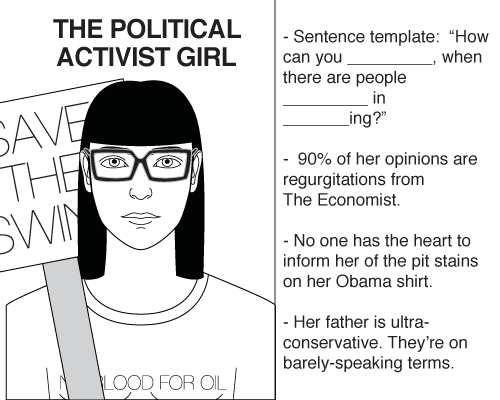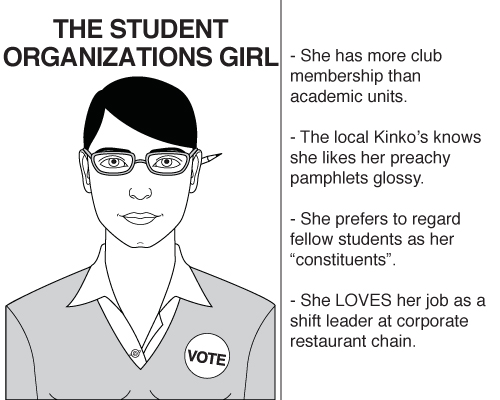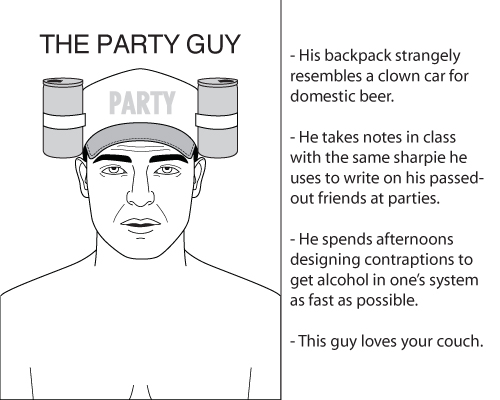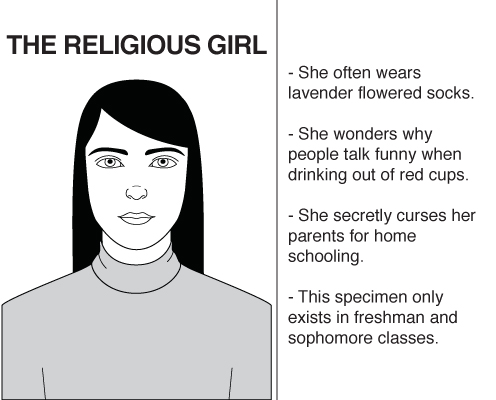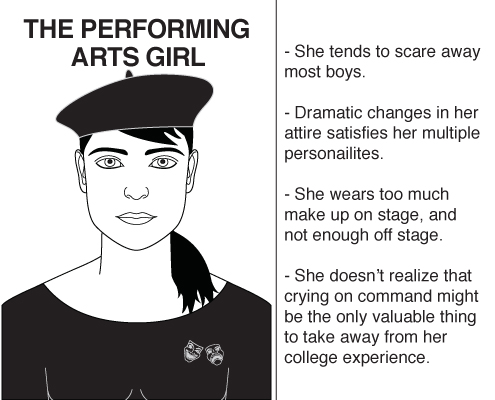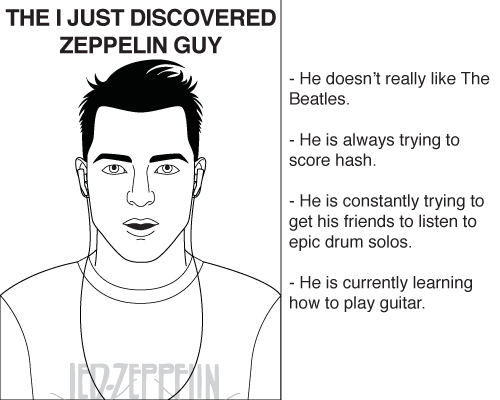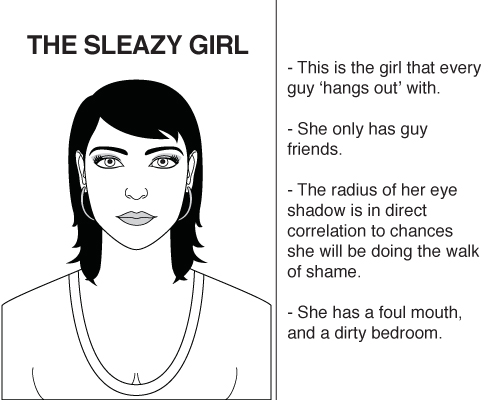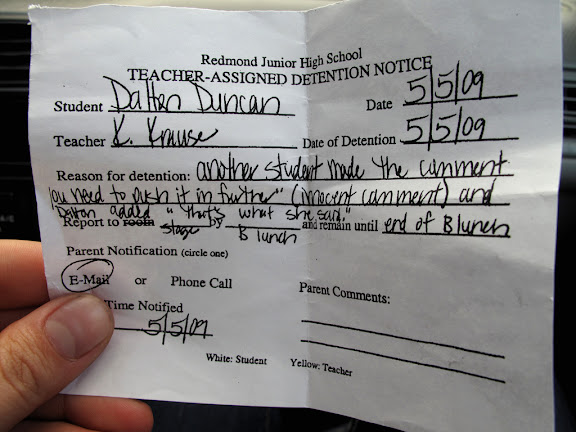Monthly Archives: June 2009
50 Helpful Resources That Will Enhance Your Writing Skills
Written by Smashing Editorial
Effective writing skills are to a writer what petrol is to a car. Like the petrol and car relationship, without solid skills writers cannot move ahead. These skills don’t come overnight, and they require patience and determination. You have to work smart and hard to acquire them. Only with experience, you can enter the realm of effective, always-in-demand writers.
Of course, effective writing requires a good command of the language in which you write or want to write. Once you have that command, you need to learn some tips and tricks so that you can have an edge over others in this hard-to-succeed world of writers. There are some gifted writers, granted. But gifted writers also need to polish their skills frequently in order to stay ahead of competition and earn their livelihood.
We collected over 50 useful and practical tools and resources that will help you to improve your writing skills. You will find copywriting blogs, dictionaries, references, teaching classes, articles, tools as well as related articles from other blogs. Something is missing? Please let us know in the comments to this post!
1. Grammar, Punctuation & Co.
Ultimate Style: The Rules Of Writing
The web’s ultimate guide to grammar provides a database of topics and an easy-to-search A-Z list of common questions (via)
Use English Punctuation Correctly
A quick and useful crash course in English punctuation.
HyperGrammar
An extensive electronic grammar course at the University of Ottawa’s Writing Centre.
Grammar Girl
Mignon Fogarty’s quick and dirty tips for better writing. Grammar Girl provides short, friendly tips to improve your writing. Covering the grammar rules and word choice guidelines that can confound even the best writers, Grammar Girl makes complex grammar questions simple with memory tricks to help you recall and apply those troublesome grammar rules.
Better Writing Skills
This site contains 26 short articles with writing tips about ampersands, punctuation, character spacing, apostrophes, semicolons and commas, difference between i.e. and e.g. etc.
The Guide to Grammar and Writing
An older, yet very useful site that will help you to improve your writing on word & sentence level, paragraph level and also essay & research paper level.
Writer’s Block
A compact resource with over 20 articles that cover abbreviations, capitalization, numbers, punctuation, word usage and writing styles.
Paradigm Online Writing Assistant
This site contains some useful articles that explain common grammar mistakes, basic punctuation, basic sentence concepts etc. Worth visiting and reading. The Learning Centre contains similar articles, but with more examples.
Jack Lynch’s Guide to Grammar and Style
These notes are a miscellany of grammatical rules and explanations, comments on style, and suggestions on usage put by Jack Lynch, an Associate Professor in the English department of the Newark campus of Rutgers University, for his classes.
English Style Guide
This guide is based on the style book which is given to all journalists at The Economist. The site contains various hints on how to use metaphors, punctuation, figures, hyphens etc. Brief and precise.
Technical Writing
An extensive guidance on grammar and style for technical writing.
40+ Tips to Improve your Grammar and Punctuation
“Purdue University maintains an online writing lab and I spent some time digging through it. Originally the goal was to grab some good tips that would help me out at work and on this site, but there is simply too much not to share.”
2. Common mistakes and problems
Common Errors in English
A collection of common errors in English, with detailed explanations and descriptions of each error.
AskOxford: Better Writing
A very useful reference for classic errors and helpful hints with a terrible site navigation.
Dr. Grammar’s Frequently Asked Questions
Answers to common grammar questions related to English grammar, with examples and additional explanations.
English Grammar FAQ
A list of common English language problems and how to solve them. This list was compiled through an extensive archive of postings to alt.usage.english by John Lawler, Linguistics, U. Michigan, Ann Arbor.
3. General Writing Skills
Writer’s Digest
Writer’s Digest offers information on writing better and getting published. The site also includes community forums, blogs and huge lists of resources for writers (via)
Infoplease: General Writing Skills
Various articles that aim to teach students how to write better.
The Elements of Style
A freely available online version of the book “The Elements of Style” by William Strunk, Jr., the classic reference book.
Poynter Writing Tools
A blog dedicated to writers and journalists. Poynter also provides Fifty Writing Tools: Quick List, a collection of podcasts related to writing.
learning lab / writing skills
This site offers over 20 .pdf-documents with main rules and common mistakes related to summarising, paraphrasing, referencing, sentences, paragraphs, linking words and business writing. Handy.
Using English
UsingEnglish.com provides a large collection of English as a Second Language (ESL) tools & resources for students, teachers, learners and academics. Browse our grammar glossary and references of irregular verbs, phrasal verbs and idioms, ESL forums, articles, teacher handouts and printables, and find useful links and information on English. Topics cover the spectrum of ESL, EFL, ESOL, and EAP subject areas.
Online Writing Courses
Free courses are a great way to improve your writing skills. The courses shown here focus on several types of creative writing, including poetry, essay writing and fiction writing.
4. Practical Guides To Better Writing Skills
Copywriting 101: An Introduction to Copywriting
This tutorial is designed to get you up and running with the basics of writing great copy in ten easy lessons. Afterwards, you’ll get recommendations for professional copywriting training, plus links to tutorials on SEO copywriting and writing killer headlines.
A Guide to Writing Well
“This guide was mainly distilled from On Writing Well by William Zinsser and The Elements of Style by Strunk and White. Other sources are listed in the bibliography. My memory being stubborn and lazy, I compiled this so I could easily refresh myself on writing well. I hope it will also be helpful to others.”
Online Copywriting 101: The Ultimate Cheat Sheet
The ultimate cheat sheet with various Web copy resources that copywriters can use to lean the best writing tips and ideas. More copywriting cheat sheets.
Headlines and Trigger Words
- 50 Trigger Words and Phrases for Powerful Multimedia Content
- 21 Traffic Triggers for Social Media Marketing
- How To Write Magnetic Headlines (and even more headlines)
- Passive Voice Is Redeemed For Web Headings
- 5 Simple Ways to Open Your Blog Post With a Bang
- Landing Page Tutorials and Case Studies
- Copywriting for e-Commerce
Common mistakes and errors
- 10 flagrant grammar mistakes that make you look stupid
- The Seven Deadly Sins of Website Copy
- Six Common Punctuation Errors that Bedevil Bloggers
Writing tips from experts
- 10 Writing Tips from the Masters
- George Orwell’s tips on better writing
- Stephen King’s Top 7 Tips for Becoming a Better Writer
- Ernest Hemingway’s Top 5 Tips for Writing Well
- Writing hacks (hacks for writing) by Scott Berkun
Practical tips
- What Is Good Content?
- 10 Steps Toward Better Writing
- A Guide To Becoming A Better Writer: 15 Practical Tips
- 10 simple things you can do to improve your writing
- 7 Can’t-Miss Ways To Kick-Start The Writing Habit
- 10 Writing Tips for Web Designers
- Activate Your Verbs
- How to Write Faster, Better, and Easier
- Writing Tips for Non-Writers Who Don’t Want to Work at Writing
- How to Write Persuasive Links
- A Guide to Becoming a Better Writer: 15 Practical Tips
- 21 Must-Read Tips To Write Better Web Content
5. Copywriting Blogs
CopyBlogger
Now that blogging has become the smartest strategy for growing an authoritative web site, it’s your copywriting skills that will set you apart and help you succeed. And this is where Copyblogger comes into play. Brian Clark’s popular blog covers useful copywriting tips, guidelines and ideas.
Write to Done
Leo Babuta’s blog about the craft and the art of writing. The blog covers many topics: journalism, blog writing, freelance writing, fiction, non-fiction, getting a book deal, the business of writing, the habit of writing. Updated twice weekly.
Problogger
Darren Rowse’s blog helps bloggers to add income streams to their blogs – among other things, Darren also has hundreds of useful articles related to copy writing.
Men with Pens
A regularly updated blog with useful tips for writers, freelancers and entrepreneurs.
Time to Write
Jurgen Wolff’s tips, ideas, inspirations for writers and would-be writers and other creative people.
Daily Writing Posts
“Whether you are an attorney, manager, student or blogger, writing skills are essential for your success. Considering the rise of the information age, they are even more important, as people are surrounded by e-mails, wikis, social networks and so on.
“It can be difficult to hone one’s writing skills within this fast paced environment. Daily Writing Tips is a blog where you will find simple yet effective tips to improve your writing.”
CopyWriting
“Copywriting website is jam-packed with useful information, articles, resources and services geared to show you how to write mouth-watering, profit-generating copy. Copy that changes minds and dramatically boosts your results. So come right in… you’re going to like what you see! It has copywriting courses, tools, articles and much more.”
Dumb Little Man: Writing
Jay White provides a handful of tips that may increase your productivity and improve your skills. You’ll find many tips and ideas for better writing in his archive category “Writing”.
The Copywriter Underground
A copywriting blog by the freelance writer Tom Chandler.
Lifehack: Writing
This collection of resources includes links to 30 posts on Lifehack that may help you to improve your writing skills.
6. Tools
OneLook Dictionary Search
More than 13,5 million words in more than 1024 online dictionaries are indexed by the OneLook search engine. You can find, define, and translate words all at one site.
Definr
A fast, suggest-as-you-type dictionary which you can add to your Firefox search box or use in bookmarklet form (see this post) (via Lifehacker).
Visuwords
Look up words to find their meanings and associations with other words and concepts. Produce diagrams reminiscent of a neural net. Learn how words associate.
Merriam Webster: Visual Dictionary
The Visual Dictionary Online is an interactive dictionary with an innovative approach. From the image to the word and its definition, the Visual Dictionary Online is an all-in-one reference. Search the themes to quickly locate words, or find the meaning of a word by viewing the image it represents. What’s more, the Visual Dictionary Online helps you learn English in a visual and accessible way.
OneLook Reverse Dictionary
OneLook’s reverse dictionary lets you describe a concept and get back a list of words and phrases related to that concept. Your description can be a few words, a sentence, a question, or even just a single word.
Online Spell Checker
Free online spell checker that provides you with quick and accurate results for texts in 28 languages (German, English, Spanish, French, Russian, Italian, Portuguese etc.). An alternative tool: Spelljax.
GNU Aspell
GNU Aspell is a Free and Open Source spell checker designed to eventually replace Ispell. It can either be used as a library or as an independent spell checker. Its main feature is that it does a superior job of suggesting possible replacements for a misspelled word than just about any other spell checker out there for the English language.
WordWeb
A one-click English thesaurus and dictionary for Windows that can look up words in almost any program. It works off-line, but can also look up words in web references such as the Wikipedia encyclopedia. Features of the free version include definitions and synonyms, proper nouns, 150 000 root words and 120 000 synonym sets.
write rhymes
As you write, hold the alt key and click on a word to find a rhyme for it.
Verbix
This English conjugator will help you to determine how to use verbs in the proper tense.
Wordcounter
Wordcounter ranks the most frequently used words in any given body of text. Use this to see what words you overuse or maybe just to find some keywords from a document. Text Statistics Generator is an alternative tool: it gives you a quick analysis of number of word occurrences.
Advanced Text Analyzer (requires registration)
This free tool analyzes texts, calculating the number of words, lexical density, words per sentence, character per word and the readability of the text as well as word analysis, phrase analysis and graded analysis. Useful! Alternative tool.
Graviax Grammar Checker
Grammar rules (XML files containing regular expressions) and grammar checker. Currently only for the English language, although it could be extended. Unit tests are built into the rules. Might form the basis of a grammar checker for OpenOffice.
txt2tags
Txt2tags is a document generator. It reads a text file with minimal markup as **bold** and //italic// and converts it to the formats HTML, LaTeX, MediaWiki, Google Code Wiki, DokuWiki, Plain text and more.
Markdown
Markdown is a text-to-HTML conversion tool for web writers. Markdown allows you to write using an easy-to-read, easy-to-write plain text format, then convert it to structurally valid XHTML (or HTML). Requires Perl 5.6.0 or later.
7. Further Resources
50 Useful Open Source Resources For Writers and Writing Majors
And if you’re a writing major, why not take advantage of all the opportunities to get great free and open source resources that can help you to write, edit and organize your work? Here’s a list of fifty open source tools that you can use to make your writing even better.
English Forums
If you have a question related to English Grammar, join these forums to get advice from others who know the language better or can provide you with some related information.
The Ultimate Writing Productivity Resource
A round-up of applications, services, resources, tools, posts and communities for writers and bloggers who want to improve their writing skills.
100 Useful Web Tools for Writers
100 useful Web tools that will help you with your career, your sanity and your creativity whenever your write. More useful round-ups.
5 Tips on Proper Geek Male Maintenance
Written by Zombologist
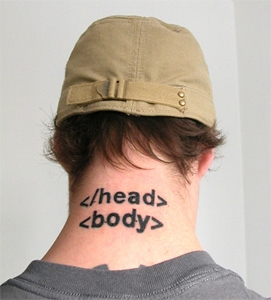 There was a great article on how to meet and woo Nerdy Girls and I’ve recently seen lots of posts on how to catch/date/seduce the female Geek.
There was a great article on how to meet and woo Nerdy Girls and I’ve recently seen lots of posts on how to catch/date/seduce the female Geek.
But I haven’t seen a lot suggestions for the ladies on how to deal with the Geek Male.
Being a female Geek, I tend to approach my Geek Males a bit differently since I’m into the things they’re into.
Now, I’ll admit. I did ask for a little help with this one, as I am not male and perspective is key. So, with the help of @zombologist and tongue firmly in cheek, I offer:
5 Tips on Proper Geek Male Maintenance
- Geek Males often work in fields that cause them to have to think a great deal and work long or irregular hours. This generally results in what I call “hurty brain”*
*Hurty Brain stems from the repeated misfiring of synapses that occurs when a question is asked of a geek that is light years behind what they specialize in.
Talking to them when they are fresh off dealing with the “raging stupid” is likely a bad idea as they aren’t always able to distinguish you from the enemy while suffering from “Hurty Brain”.
Crack them a beer or pour them a glass of whatever they prefer and let them be for a while. Giving them time to read webcomics or kill a few things on the PS3 lets them unwind, allows the brain to repair itself and gives the beast within time to settle down.
- Geek Males need play time. Whether it’s Xbox, Warcraft, or building PC’s from parts, geek guys need time to engage in said activities. Without harassment. You may not know a Tauren from a Master Chief, but just because you may not get it doesn’t mean he doesn’t think its pretty dang awesome.
Side note: This is true for any hobby, really. If you haven’t found a way to give your guy a couple of nights to do what he likes without interruption, you’re going to find yourself single fairly soon.
If you engage in the same activities (and enjoy them – no fair just “pretending” so you can be included), that opens up the possibilities. Heck, girls like Magic just as much as boys do and any Geek worth his salt loves a woman who knows how rock the DPS. 😉
2a. NOTE: Geeks do have a tendency to lose track of time and may go over limit. Pulling your geek away from his hobbies may at times seem daunting, but I’m sure you can think of a way to get his attention ;-).
- Let’s talk about movies. Be fair. Really. Asking a guy to watch a “chick flick” is already asking a lot. (On a side note, I’ve never really understood why women ask that. I mean, why would you want to torment a guy? ::grin:: Don’t you have girlfriends to go to the movies with?)
Solution? Trade off. If you’re going to ask him to watch Steel Magnolias, you’d better be ready to watch Buckaroo Banzai. Know what I mean?
- Buying him a present? Want to know what he wants? Giftcards. Giftcards. Giftcards.
Why? Because Geek males are horridly self sufficient. You’re going to buy him a book or a game and you’ll be -so- proud of yourself that you remembered he wanted the new David Weber hardback when you were at the mall.
But by the time you’re ready to give it to him he’ll walk into the house with a bag from Best Buy or Borders because he got it for himself. Yeah, I’m looking at you.
- Lastly, and perhaps the most challenging…engaging the geek male in conversation. Obviously you got through the door if you’re reading this list and taking notes, but knowing how to communicate with the opposite sex is what makes or breaks any relationship.
Learn how to speak Geek or at least learn to actively listen to the Geek in your life.
For reference, let’s define what “geek” means, and for that we call upon the words of a college professor: Being a geek means possessing and being passionate about knowledge that no one cares about or considers.
No one.
So, you can see that the geek male is largely ignored throughout his natural life, even amongst his own people. There is hope because being male, geek males understand the logic of an argument even if the rest of the natural world believes the argument to be nonsense. The key is to counter his geek with your own.
There’s got to be something inside you, or easily accessible that you can call into discussion as a parallel to form an argument. Draw the parallel and you’re good. He may not understand it in perfect context, but he will acknowledge your passion for it and your attempt at relating.
He may also secretly wet himself a little.
Good luck 😉
Debunking Canadian health care myths
Written by Rhonda Hackett

As a Canadian living in the United States for the past 17 years, I am frequently asked by Americans and Canadians alike to declare one health care system as the better one.
Often I’ll avoid answering, regardless of the questioner’s nationality. To choose one or the other system usually translates into a heated discussion of each one’s merits, pitfalls, and an intense recitation of commonly cited statistical comparisons of the two systems.
Because if the only way we compared the two systems was with statistics, there is a clear victor. It is becoming increasingly more difficult to dispute the fact that Canada spends less money on health care to get better outcomes.
Yet, the debate rages on. Indeed, it has reached a fever pitch since President Barack Obama took office, with Americans either dreading or hoping for the dawn of a single-payer health care system. Opponents of such a system cite Canada as the best example of what not to do, while proponents laud that very same Canadian system as the answer to all of America’s health care problems. Frankly, both sides often get things wrong when trotting out Canada to further their respective arguments.
As America comes to grips with the reality that changes are desperately needed within its health care infrastructure, it might prove useful to first debunk some myths about the Canadian system.
Myth: Taxes in Canada are extremely high, mostly because of national health care.
In actuality, taxes are nearly equal on both sides of the border. Overall, Canada’s taxes are slightly higher than those in the U.S. However, Canadians are afforded many benefits for their tax dollars, even beyond health care (e.g., tax credits, family allowance, cheaper higher education), so the end result is a wash. At the end of the day, the average after-tax income of Canadian workers is equal to about 82 percent of their gross pay. In the U.S., that average is 81.9 percent.
Myth: Canada’s health care system is a cumbersome bureaucracy.
The U.S. has the most bureaucratic health care system in the world. More than 31 percent of every dollar spent on health care in the U.S. goes to paperwork, overhead, CEO salaries, profits, etc. The provincial single-payer system in Canada operates with just a 1 percent overhead. Think about it. It is not necessary to spend a huge amount of money to decide who gets care and who doesn’t when everybody is covered.
Myth: The Canadian system is significantly more expensive than that of the U.S.Ten percent of Canada’s GDP is spent on health care for 100 percent of the population. The U.S. spends 17 percent of its GDP but 15 percent of its population has no coverage whatsoever and millions of others have inadequate coverage. In essence, the U.S. system is considerably more expensive than Canada’s. Part of the reason for this is uninsured and underinsured people in the U.S. still get sick and eventually seek care. People who cannot afford care wait until advanced stages of an illness to see a doctor and then do so through emergency rooms, which cost considerably more than primary care services.
What the American taxpayer may not realize is that such care costs about $45 billion per year, and someone has to pay it. This is why insurance premiums increase every year for insured patients while co-pays and deductibles also rise rapidly.
Myth: Canada’s government decides who gets health care and when they get it.While HMOs and other private medical insurers in the U.S. do indeed make such decisions, the only people in Canada to do so are physicians. In Canada, the government has absolutely no say in who gets care or how they get it. Medical decisions are left entirely up to doctors, as they should be.
There are no requirements for pre-authorization whatsoever. If your family doctor says you need an MRI, you get one. In the U.S., if an insurance administrator says you are not getting an MRI, you don’t get one no matter what your doctor thinks – unless, of course, you have the money to cover the cost.
Myth: There are long waits for care, which compromise access to care.There are no waits for urgent or primary care in Canada. There are reasonable waits for most specialists’ care, and much longer waits for elective surgery. Yes, there are those instances where a patient can wait up to a month for radiation therapy for breast cancer or prostate cancer, for example. However, the wait has nothing to do with money per se, but everything to do with the lack of radiation therapists. Despite such waits, however, it is noteworthy that Canada boasts lower incident and mortality rates than the U.S. for all cancers combined, according to the U.S. Cancer Statistics Working Group and the Canadian Cancer Society. Moreover, fewer Canadians (11.3 percent) than Americans (14.4 percent) admit unmet health care needs.
Myth: Canadians are paying out of pocket to come to the U.S. for medical care.Most patients who come from Canada to the U.S. for health care are those whose costs are covered by the Canadian governments. If a Canadian goes outside of the country to get services that are deemed medically necessary, not experimental, and are not available at home for whatever reason (e.g., shortage or absence of high tech medical equipment; a longer wait for service than is medically prudent; or lack of physician expertise), the provincial government where you live fully funds your care. Those patients who do come to the U.S. for care and pay out of pocket are those who perceive their care to be more urgent than it likely is.
Myth: Canada is a socialized health care system in which the government runs hospitals and where doctors work for the government.Princeton University health economist Uwe Reinhardt says single-payer systems are not “socialized medicine” but “social insurance” systems because doctors work in the private sector while their pay comes from a public source. Most physicians in Canada are self-employed. They are not employees of the government nor are they accountable to the government. Doctors are accountable to their patients only. More than 90 percent of physicians in Canada are paid on a fee-for-service basis. Claims are submitted to a single provincial health care plan for reimbursement, whereas in the U.S., claims are submitted to a multitude of insurance providers. Moreover, Canadian hospitals are controlled by private boards and/or regional health authorities rather than being part of or run by the government.
Myth: There aren’t enough doctors in Canada.
From a purely statistical standpoint, there are enough physicians in Canada to meet the health care needs of its people. But most doctors practice in large urban areas, leaving rural areas with bona fide shortages. This situation is no different than that being experienced in the U.S. Simply training and employing more doctors is not likely to have any significant impact on this specific problem. Whatever issues there are with having an adequate number of doctors in any one geographical area, they have nothing to do with the single-payer system.
And these are just some of the myths about the Canadian health care system. While emulating the Canadian system will likely not fix U.S. health care, it probably isn’t the big bad “socialist” bogeyman it has been made out to be.
It is not a perfect system, but it has its merits. For people like my 55-year-old Aunt Betty, who has been waiting for 14 months for knee-replacement surgery due to a long history of arthritis, it is the superior system. Her $35,000-plus surgery is finally scheduled for next month. She has been in pain, and her quality of life has been compromised. However, there is a light at the end of the tunnel. Aunt Betty – who lives on a fixed income and could never afford private health insurance, much less the cost of the surgery and requisite follow-up care – will soon sport a new, high-tech knee. Waiting 14 months for the procedure is easy when the alternative is living in pain for the rest of your life.
Rhonda Hackett of Castle Rock is a clinical psychologist.
A Famous Person Has Died…
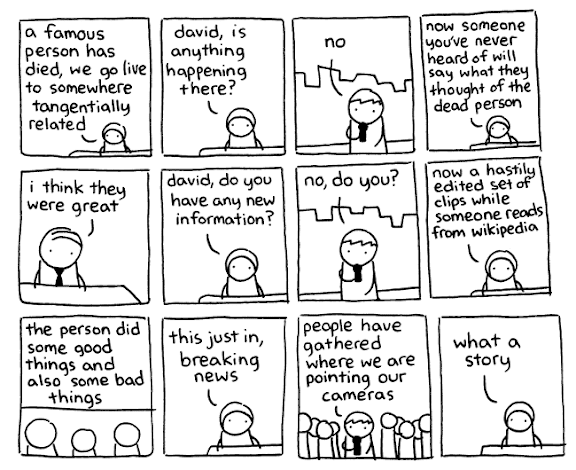
10 Stereotypes that Everyone Meets in College
12 Things You THOUGHT Were Bad for You…
Written by Jeryl Brunner
Turns out, your guilty pleasures (red wine, video games) may not be so guilty after all. And those pesky side effects of being an adult-stress, anyone?-can actually benefit you too. Read on to learn the positives of your seemingly negative habits.

Say Yes to Stress
As long as stress doesn’t completely overtake you (too much burns the body out), a little bit isn’t such a bad thing. “It can motivate you into action and clear the mind,” says Judith Orloff, MD, author of Emotional Freedom and a psychiatrist at UCLA. According to Dr. Orloff, good stress is defined as when you experience a short burst of the hormones adrenaline and cortisol, which rev up your system, propelling you to better handle and complete tasks. A little stress has helped actors give their finest performances and brides plan the most elaborate weddings. Adds Orloff, “The stress hormones help make you more present, so you are sharper.”

Meaty Subject
Meat often gets a bad rap-the threats of obesity, high cholesterol, and even colon cancer are enough to make anyone decline that next barbecue invitation-but experts now advise that you can have your steak and spare the guilt. “Some beef fat is monounsaturated, which is the kind of fat that is good for you and actually helps lower LDL, or bad cholesterol, like the kind found in olive oil and avocado,” says George Faison, COO of DeBragga and Spitler and owner of DeBragga.com, an online purveyor of high-quality meats. Meat from grass-fed cattle, Faison explains, is also lower in saturated fat than conventionally raised beef and has more omega-3 fatty acids, vitamin E, and conjugated linoleic acid-all healthy, beneficial components. In fact, according to the American Meat Institute, there are 29 cuts of lean beef that have fewer calories and are leaner than the same size serving of salmon. (And, really, who wants to serve salmon at a barbecue?)

Special Dark
Though milk chocolate might win in a popularity contest, many experts have been lauding dark chocolate (especially the variety containing high cocoa content) because it’s chock-full of antioxidants. And according to Jordan Rubin, New York Times best-selling author of The Maker’s Diet, the sweet stuff releases endorphins and serotonin, which act as antidepressants. Some proponents also say that just a few pieces of the excellent-quality dark chocolate can seriously curb your cravings. It’s rich in chemicals that stabilize your brain when it longs for sugar-so it goes a long way. For another healthy bonus, go organic, too: “Regular chocolate is sprayed with heavy pesticides that we end up consuming,” Rubin says.

Let the Sunshine In!
After all we’ve learned about the sun’s damaging effects-uneven pigmentation, sagging skin, premature wrinkles, and, most insidious of all, melanoma-who wouldn’t want to swear off the beach and see the parasol experience a sartorial renaissance. But let’s not act too hastily. Turns out, the sun helps your body generate much-needed vitamin D, which can combat osteoporosis. “Vitamin D is necessary because it helps you absorb calcium, which everyone needs,” says Alexandra Fingesten, MD, a doctor of internal medicine affiliated with New York University. “If you’re working inside all day, it’s important to get outside, even for a little bit. And consult with your doctor about taking calcium and vitamin D supplements.” Just don’t forget your SPF of 20 or higher when you do venture outside-even for the shortest jaunts.

Information Overload?
While some say multitasking dilutes your focus (and we know you’re tending to your Twitter account as you read this), for many people, the positives-like increased productivity-significantly outweigh the negatives. “I know people whose multitasking energizes and stimulates them and makes them feel at the top of their game,” says Dr. Orloff. That’s the case for Jim Sexton, CEO of Z-Line Designs, who employs thousands of people around the globe, sponsors NASCAR and Indy Car teams, and typically focuses on 20 or 30 design projects a day. “That’s the way I work and thrive,” says Sexton, whose schedule often results in his having had dinner in five different states in as many days. “I’ve always been this way.”

The Buzz on Coffee
While we recommend keeping your caffeine consumption in check, in Eat Drink and Be Healthy by Walter Willett, MD, (co-developed by the Harvard School of Public health), coffee is said to help decrease the possibility of developing kidney stones (because of its diuretic components) and gallstones (as it prevents stone formation). Also, the libation contains antioxidants, which have shown to lower the risk of diabetes and has antidepressant properties. “It helps elevate serotonin and dopamine in the body and boosts your mood,” says Dr. Orloff. However, she warns against drinking more than three cups a day: “It can burn out your gastric lining.”

Daydream Believer
As a third-grader at St. Pat’s Elementary in Hubbard, Ohio, Patrick Scullin was “lambasted” for his daydreaming ways, especially during math class. The word was that daydreaming was unproductive and unfocused. But allowing his mind to wander served him quite well in his adman career, as a founding partner of Ames Scullin O’Haire Advertising, a firm that has earned more than $110 million in billings. “My best ideas come when I’m not trying to think of them. If you want your muse to feed you, study a problem and then don’t think about it,” advises Scullin. “Daydream. Let your mind meander and your imagination run free. Soon the gift of ideas will be delivered.”

In Vino Veritas
We don’t have to convince you of wine’s pesky social side effects-you can check your text-message outbox for unsettling evidence of last night’s debauchery. But when it comes to various health benefits, oenophiles are in luck. “The resveratrol found in wine is a powerful antioxidant that is stronger than antioxidant vitamins,” says Richard Baxter, MD, a physician and author of The Red Wine Diet , scientist Roger Corder reveals that certain red wines, especially from southwest France, are more beneficial for living a longer, healthy life. Wines made from the tannat grape there have the highest levels of procyanidins (responsible for keeping blood vessels clear and preventing heart disease) than any another wine in the world.

Get Your Game On
Okay. We know what you’re thinking. But with the advent of the Wii, you can’t be a couch potato because playing requires you to move. (And now other companies are developing active programs too.) In fact, the game is a million times more interactive than watching TV. “Before the Wii, who ever worked up a sweat playing a video game in their living room?” says Paul Bragan, executive director at Wakefield Research, a leading gaming researcher. “Using a wireless controller, you can bowl and play baseball and tennis all from your family room.” And certain games inspire children to interact with parents and adults. “Last year, a British magazine revealed that Queen Elizabeth became an avid video gamer after joining her grandson Prince William in a game of Wii,” says Bragan. “I’d call that a royal vote of confidence.”

Bubblicious?
Reader’s Digest reporters interviewed 25 dentists for their story in the July 2009 issue “50 Secrets Your Dentist Will Never Tell You.” Their findings? Chewing gum actually prevents cavities. Studies show that if you want to reduce bad bacteria, xylitol (a sugar substitute found in chewing gum) helps change the chemistry of your mouth. Six or seven pieces of xylitol gum every day will help keep cavities away. “And chewing gum triggers saliva, which also aids in preventing cavities,” says the magazine’s deputy editor, Lisa Davis. (However, in a related study, gum cracking was found to be irritating by 100 percent of participants.)

Love Thy Frenemy
Can it really be good to have a one-upping frenemy? Actually, it is, say some experts. “It can definitely make life a little more challenging and interesting,” says Andrea Lavinthal, coauthor of Friend or Frenemy?: A Guide to the Friends You Need and the Ones You Don’t. “Some healthy competition can propel you in a positive way and keep you on your toes.” If your frenemy goes on a diet and loses a lot of weight, chances are you will hit the treadmill with more vigor and out-diet her. Besides, a frenemy can make you aware of your negative behavior and help keep you in check. “You know how there is always one girl in a group of friends who ‘tells it like it is’ whether you want to hear it or not?” says Lavinthal. “That honesty, while annoying and sometimes hurtful, can also be really helpful.”

Shout It Out
We all know the dangers of keeping emotions bottled up (err, psych 101?)-but some parenting experts say that it’s important to let off a little steam and show your kids when you are angry with them-for your sake and theirs! Yell at them, you ask? “Sometimes children do things to make you angry. They need to understand the consequences, and you have to be more stern and harsh to reinforce the message,” says Bennett Leventhal, MD, a professor of psychiatry at the Institute for Juvenile Research, University of Illinois College of Medicine in Chicago. And yes, in certain situations, it’s even acceptable to shout. “While as a guide, we don’t want to yell at our children, especially with routine communication,” says Dr. Leventhal, “in an emergency or crisis, yelling is good to gain their attention. But afterward you should always explain why you were angry.”
11 Things The Bible Bans, But You Do Anyway
Written by 11points
Yesterday, I found myself in a discussion about the anti-abortion people. The reason: It’s just incomprehensible to us that people get so zealous about that issue that they’ll go as far as to murder doctors who perform abortions and bomb abortion clinics.
The conversation then took its natural turn to selective, self-serving interpretations of the Bible… finding a few verses that you can use to justify a position that lets you impose your morality on someone, and riding those verses hard and fast for the rest of your life.

So I thought it’d be a good time to find a bunch of stuff that the Bible bans… stuff that’s a lot LESS convenient. Don’t worry, though… just because I’m pointing it out, that doesn’t mean you now have to follow it. It’s a lot easier to keep discriminating against gay people for no particular reason than to stop eating bacon, after all.
Here are 11 things that are technically banned by the Bible. (All quotes are translations from the New American Standard Bible, but, because I’m actually trying to maintain serious journalistic integrity here, I cross-referenced several other translations to make sure I wasn’t missing the point.)
- Round haircuts. See you in Hell, Beatles… and/or kids with bowl cuts, surfer cuts or (my favorite) butt cuts. Leviticus 19:27 reads “You shall not round off the side-growth of your heads nor harm the edges of your beard.”
-
Football. At least, the pure version of football, where you play with a pigskin. The modern synthetic footballs are ugly and slippery anyways. Leviticus 11:8, which is discussing pigs, reads “You shall not eat of their flesh nor touch their carcasses; they are unclean to you.”
And you’re doubly breaking that if you wake up, eat some sausage then go throw around the football. Or go to the county fair and enter a greased pig catching contest.
-
Fortune telling. Before you call a 900 number (do people still call 900 numbers, by the way?), read your horoscope or crack open a fortune cookie, realize you’re in huge trouble if you do.
Leviticus 19:31 reads “Do not turn to mediums or spiritists; do not seek them out to be defiled by them. I am the Lord your God.” The penalty for that? Check Leviticus 20:6: “As for the person who turns to mediums and to spiritists, to play the harlot after them, I will also set My face against that person and will cut him off from among his people.”
Seems like a lifetime of exile is a pretty harsh penalty for talking to Zoltar.
-
Pulling out. The Bible doesn’t get too much into birth control… it’s clearly pro-populating but, back when it was written, no one really anticipated the condom or the sponge, so those don’t get specific bans.
But… pulling out does. One of the most famous sexual-oriented Bible verses… the one that’s used as anti-masturbation rhetoric… is actually anti-pulling out.
It’s Genesis 38:9-10: “Onan knew that the offspring would not be his; so when he went in to his brother’s wife, he wasted his seed on the ground in order not to give offspring to his brother. But what he did was displeasing in the sight of the Lord; so He took his life also.”
Yep — pull out and get smote. That’s harsh.
-
Tattoos. No tattoos. Leviticus 19:28 reads, “You shall not make any cuts in your body for the dead nor make any tattoo marks on yourselves: I am the Lord.”
Not even a little butterfly on your ankle. Or Thug Life across your abdomen. Or even, fittingly enough, a cross.
-
Polyester, or any other fabric blends. The Bible doesn’t want you to wear polyester. Not just because it looks cheap. It’s sinfully unnatural.
Leviticus 19:19 reads, “You are to keep My statutes. You shall not breed together two kinds of your cattle; you shall not sow your field with two kinds of seed, nor wear a garment upon you of two kinds of material mixed together.”
Check the tag on your shirt right now. Didn’t realize you were mid-sin at this exact second, did you? (Unless you checked the tag by rolling off your neighbor’s wife while you two were having anal sex in the middle of robbing a blind guy. Then your Lycra-spandex blend is really the least of your problems.)
-
Divorce. The Bible is very clear on this one: No divorcing. You can’t do it. Because when you marry someone, according to Mark 10:8, you “are no longer two, but one flesh.” And, Mark 10:9 reads, “What therefore God has joined together, let no man separate.”
Mark gets even more hardcore about it a few verses later, in Mark 10:11-12, “And He said to them, ‘Whoever divorces his wife and marries another woman commits adultery against her; and if she herself divorces her husband and marries another man, she is committing adultery.'”
-
Letting people without testicles into church. Whether you’ve been castrated or lost one or two balls to cancer isn’t important. The Bible doesn’t get that specific. It just says you can’t pray.
Deuteronomy 23:1 reads (this is the God’s Word translation, which spells it out better), “A man whose testicles are crushed or whose penis is cut off may never join the assembly of the Lord.”
Oh, and the next verse says that if you’re a bastard, the child of a bastard… or even have a great-great-great-great-great-great-great-grandchild of a bastard, you can’t come to church or synagogue either. Deuteronomy 23:2 reads, “No one of illegitimate birth shall enter the assembly of the Lord; none of his descendants, even to the tenth generation, shall enter the assembly of the Lord.”
-
Wearing gold. 1 Timothy 2:9 doesn’t like your gold necklace at all. Or your pearl necklace. Or any clothes you’re wearing that you didn’t get from Forever 21, Old Navy or H&M.
“Likewise, I want women to adorn themselves with proper clothing, modestly and discreetly, not with braided hair and gold or pearls or costly garments.”
-
Shellfish. Leviticus 11:10 reads, “But whatever is in the seas and in the rivers that does not have fins and scales among all the teeming life of the water, and among all the living creatures that are in the water, they are detestable things to you.” And shellfish is right in that wheelhouse.
Leviticus 11 bans a TON of animals from being eaten (it’s THE basis for Kosher law); beyond shellfish and pig, it also says you can’t eat camel, rock badger, rabbit, eagle, vulture, buzzard, falcon, raven, crow, ostrich, owl, seagull, hawk, pelican, stork, heron, bat, winged insects that walk on four legs unless they have joints to jump with like grasshoppers (?), bear, mole, mouse, lizard, gecko, crocodile, chameleon and snail.
Sorry if that totally ruins your plans to go to a rock badger eat-off this weekend.
-
Your wife defending your life in a fight by grabbing your attacker’s genitals. No joke. Deuteronomy actually devotes two verses to this exact scenario: Deuteronomy 25:11-12.
“If two men, a man and his countryman, are struggling together, and the wife of one comes near to deliver her husband from the hand of the one who is striking him, and puts out her hand and seizes his genitals, then you shall cut off her hand; you shall not show pity.”
That’s impossible to misinterpret. Ladies, if your husband is getting mugged, make sure to kick the mugger in the pills. Do not do the grip and squeeze (no matter what “Miss Congeniality” might advise). Or your hand needs to be cut off.
As a final note, I know that nine of these 11 cite the Old Testament, which Christianity doesn’t necessarily adhere to as law.
To which I say: If you’re going to ignore the section of Leviticus that bans about tattoos, pork, shellfish, round haircuts, polyester and football, how can you possibly turn around and quote Leviticus 18:22 (“You shall not lie with a male as one lies with a female; it is an abomination.”) as irrefutable law?
But that’s me trying to introduce logic to religious fanaticism (or, at least, trying to counter some mix of ignorance, bigotry and narcissism with logic). And I should probably know better.
10 Beers You Must Drink This Summer
Written by Bruce Owens
 I want you all to look at this column as a summer reading list. These are the 10 beers you must drink this summer. Some of these beers you are probably very familiar with, Sierra Nevada Pale Ale for example. Think back when is the last time you had an ice cold Sierra Nevada Pale Ale on a 90 degree day? This is all about rediscovering some classics and finding new favorites.
I want you all to look at this column as a summer reading list. These are the 10 beers you must drink this summer. Some of these beers you are probably very familiar with, Sierra Nevada Pale Ale for example. Think back when is the last time you had an ice cold Sierra Nevada Pale Ale on a 90 degree day? This is all about rediscovering some classics and finding new favorites.
There are a ton of other great beers out there to beat the heat. Alaskan Summer Ale and Yuengling Lager come to mind. That being said I am trying to make sure these beers have a wider distribution so that all reading this column can enjoy.
10. Victory Prima Pils – The perfect BBQ beer. This beer has the body and flowery aroma of a pilsner but is one of the hoppiest pilsners on the market. This allows Prima Pils to stand up to the spiciness of peppery BBQ’ed meat coming off of your grill. Prima Pils also has a great sparkling carbonation that not only is refreshing but will cleanse the pallete of thick BBQ sauces and pasta/potato salads.
9. Landshark Lager – I first had this refreshing Lager on a 105 degree day in Las Vegas. This is a perfect summer session beer. This larger is crisp, clean and satisfying and is a perfect beer to ice down by the six-pack in a bucket. The perfect cooler companion.
8. Saison Dupont Farmhouse Ale– Perfect for those scorching August nights. This beer is very dry and crisp with a lot of characteristics of a Sauvignon Blanc. During those moonlit summer nights this is the beer to be shared with someone special. Dupont’s caged, corked finished bottle will add a little class to your special evening.
7. Sierra Nevada Pale Ale – You can go home again. Admit it this is the beer that started you off on your journey into the world of microbrews. Now that you have trained and sharpened your palette this is the perfect time to rediscover this classic.
6. Pabst Blue Ribbon – I have a cold can of PBR in my hand right now as I write this. This 2006 Great American Beer Festival Gold Medal winner is so under rated. Not only is this a hoppy American style lager it is inexpensive. At $15 dollars per 30 pack it is a perfect beer to fill you cooler to the brim. Available in 12 ounce cans it is an awesome companion for the golf course or beach.
5. Sam Adams Summer Ale – This is a great American style wheat beer. What makes this beer stand out among the throng of American Wheat Beers is grains of paradise, a rare pepper from Africa. The lemon zest makes this beer a no brainer to pair with grilled lemon pepper chicken or shrimp on the barbie.
4. Ommegang Witte Ale – This is a light Belgian style wheat beer with tart citrus flavors and a touch of coriander. This beer is best paired with a fresh citrus fruit salad. Throw some chilled grapefruit, orange and tangerine in a bowl with some mandarin oranges now you have the perfect companion for this great beer.
3. Harpoon Summer – The classic Kolsch Ale. It has the body and color of a pilsner, with the fruit esters of ale. I call this beer the crowd pleaser. It is light enough to appeal to American Lager drinkers and has more than enough flavor to satisfy any beer geek or even snob. Harppon summer is also great with all of your outdoor fare. Harpoon Summer matches up just as well with a New England Clambake as it does with burgers and dogs.
2. Stone Cali-Belgique IPA – What can I say, Stone does it again. This is a huge American IPA with Belgian yeast. When I say huge I want you to understand this beer is coming at you at 77 IBU’s. Cali-Belgique is not only the hoppiest of our summer drinking list it is the strongest. This beer is weighing in at 6.9%, not quite an IIPA but with the IBUs an alcohol by volume Stone Brewing Co. could have given this beer that moniker. The spiciness of the Belgium yeast playing off of the Chinook hops makes this a very interesting summer sipper.
1. Erdinger Weissbier – This is a classic German style wheat beer. This is a cloudy beer due to the fact it is unfiltered and bottle conditioned. Banana and spice aromas are obvious in the aroma of this beer along with a touch of grass and lemon. Traditionally this style of beer is served with a lemon slice. Ignore the status quo and go with an orange slice or a wedge of grapefruit. Better yet cut up a bowl of mixed fresh melons. Some cantaloupe, honeydew and watermelon mixed in a bowl with a bit of pineapple are the perfect back deck companion for this great brew.
There are my ten. I wouldn’t call it a top ten but it is close. If my summer drinking is truncated to 10 beers there is something wrong going on. I could easily have 10 different beers this summer from Sam Adams, Victory or Stone Brewing Company alone. Still I hope this gives you a good start on your summer drinking.
























